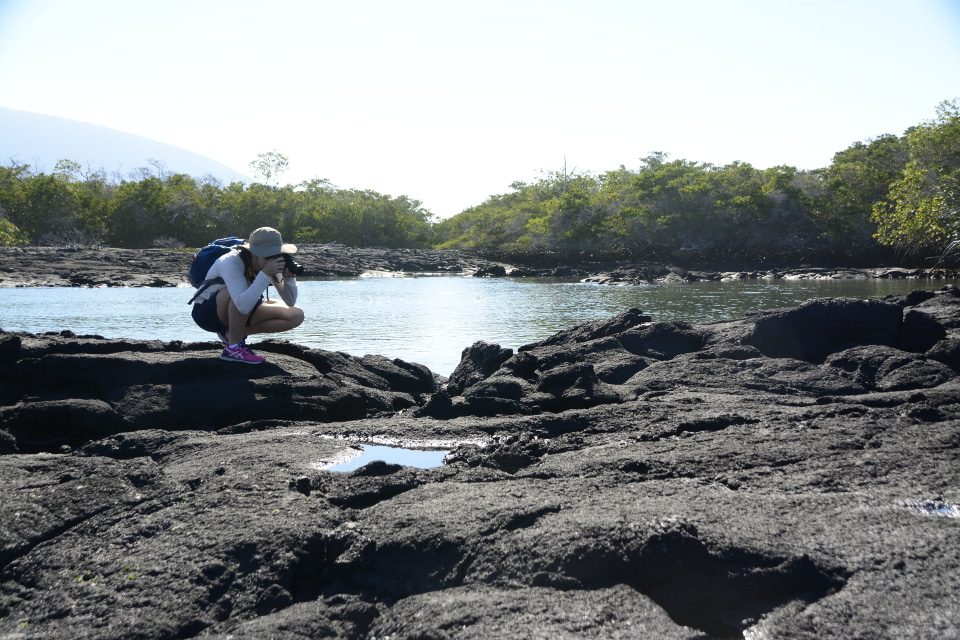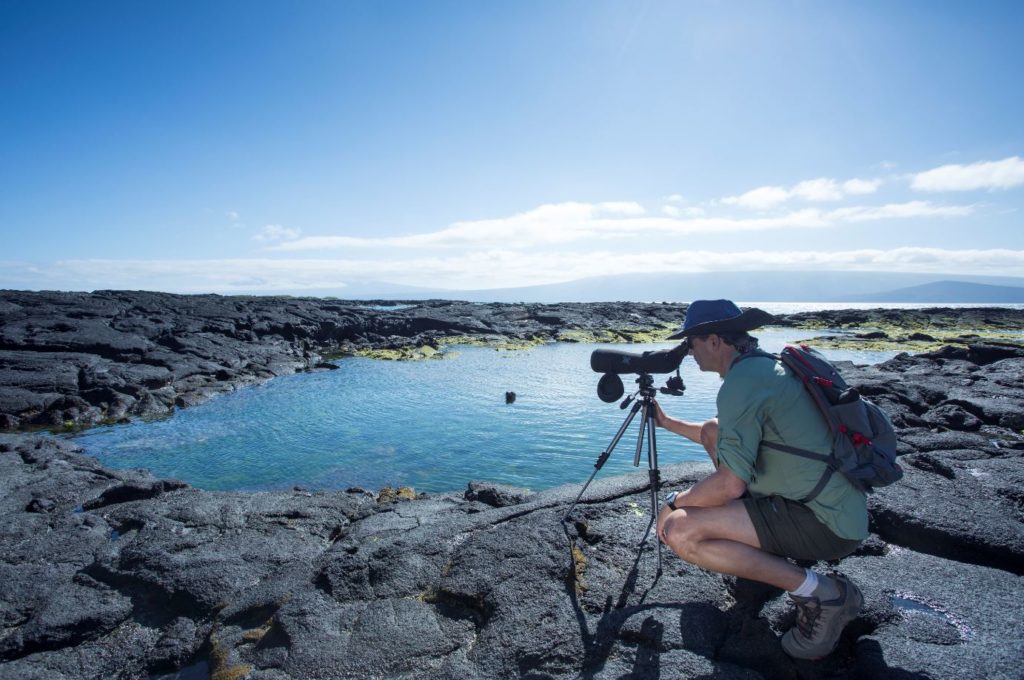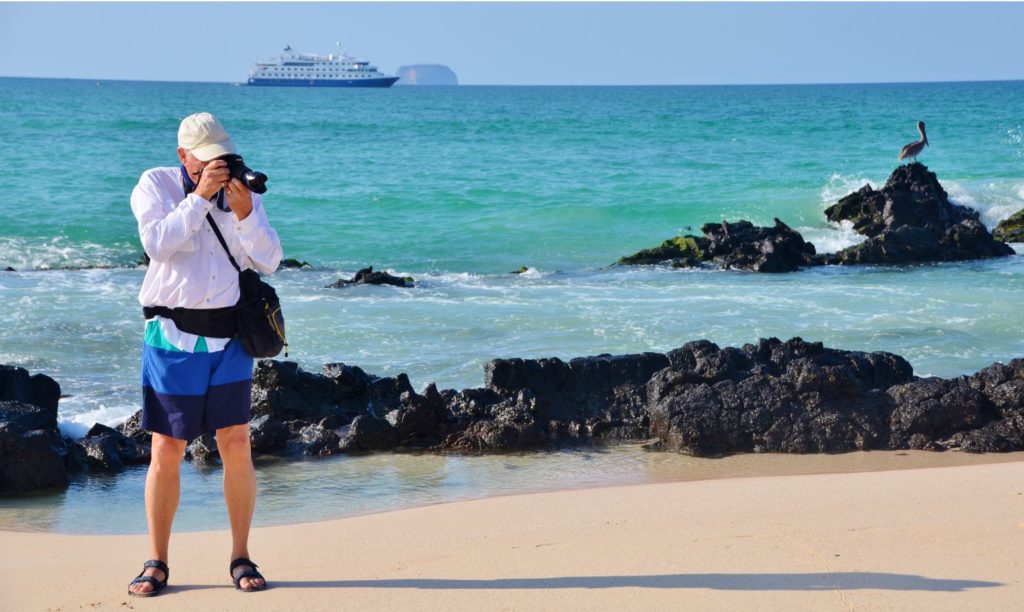Become a Galapagos Photographer
A bounty of memories awaits in the form of photographs when you reach the Galapagos Islands. The experience of photography in Galapagos is truly unique, with its amazing landscapes, the wildlife that roams freely around each and every rock, the welcoming locals, and the numerous and magical sunsets to top it off. So whether it’s a GoPro, your phone camera, or a DSLR, keep your camera handy as you are guaranteed to spot numerous moments that worth capturing. Just take into account the following recommendations and a few Galapagos National Park rules you have to follow to ensure you know what to photograph (without disturbing the archipelago’s fragile ecosystem).
The Spectacular Wildlife

Galapagos is famous for its particular group of wildlife. What people don’t know is just how friendly this wildlife tends to be. By friendly, we don’t necessarily mean that a marine iguana will approach you expecting to be petted, we just mean friendly in the sense of having a peaceful coexistence with the newcomers. One quality that most Galapagos animals are known for is how unafraid they are of humans. Man of them will go about their lives completely undisturbed by the presence of humans. At visitor sites and even inside towns, you will find blue-footed boobies flying around town and Galapagos sea lions basking on the boardwalk. The proximity that Galapagos wildlife allows between photographer and subject makes for some really great photo opportunities. You will never find a better animal to “model for you” than a Galapagos animal.
TALK TO A DESTINATION EXPERT

Diego Zapata

Rosa Mena

Sandy Lara

Diego Zapata

Rosa Mena

Sandy Lara
Get Close, But Not So Close
Take into account the following recommendations if you want to get a little more of your wildlife photography in Galapagos. The Galapagos National Park has strict rules when it comes to protecting the environment and its wildlife. That is why even though you might feel the temptation to get really close to the animals (as these will not run away from you) it’s always important to remember not to get too close. Visitors are not allowed to walk outside of marked trails and they are totally forbidden to touch or feed the animals. It may seem over-the-top, but touching or feeding actually has a huge, negative impact on their lives due to the fact that human-carried bacteria and viruses can be passed onto the animals. Even something as harmless as the human smell can get caught on animal pups that could cause them to be rejected by their mothers. So get close, but be considerate of just how close you get.
Photographer’s Tip: Fast prime lenses (for that lovely bokeh effect) are excellent for taking portraits of the wildlife, as these lenses help create a soft background to help pick out the subject from the surrounding environment. Zoom-lenses and even telephoto lenses are also highly recommended, as these will allow guests to get in just a little bit closer to all those creatures that are might be somewhat far away.
Surreal Landscapes

Heading back home after your Galapagos cruise, words will surely fail us. With otherworldly landscapes and surreal fauna, the Galapagos Islands make for a place that only pictures can do justice in terms of storytelling. The only things you won’t be able to transmit through pictures are the sounds, smells, and textures. Nevertheless, the islands are home to the scenery that looks like it was copied and pasted from another planet and, consequently, will consume most of your Field of View when looking through your viewfinder. Not to mention your memory cards and battery life too, so be sure to bring extra juice and storage! The landscapes are also a reason for why we highly recommend bringing a wide-angle lens to capture as much of the surrounding scenery as you can. If possible, try bringing along a fish-eye lens.
Camera Equipment & Shooting Recommendations

Professionals and amateurs are all welcome to the archipelago, but no matter what kind of equipment you bring for shooting, one can never be too cautious about protecting your gear. Dry bags, padded camera bags, and weather-sealed camera bodies are highly recommended given the number of wet-landings there will be along with the changing weather patterns throughout the archipelago.
A waterproof camera for underwater shots is certainly a must for any divers or swimmers. The Galapagos Archipelago has one of the largest Marine Reserves in the world (which was recently extended last summer) and a stunning amount of biodiversity. From playful seals to enormous whale sharks, you will certainly want to capture the magnificent marine life that these islands have to offer.
NOTE: The use of drones is strictly prohibited in the Galapagos Islands for tourists. Professionals looking to film with drones will have to apply for a permit to fly them.
Here are some final tips:
- Always try and maintain a distance of at least 2 meters from all wildlife (even if it’s them that approach you).
- Flash photography is prohibited.
- Do not step off the trail.
- Be careful not to step on plants or wildlife.

Javier Garcia

Eduardo Silva

Carolina Escobar
START PLANNING YOUR TRIP

Javier Garcia

Eduardo Silva

Carolina Escobar
Get in touch for more
CONTACT US


